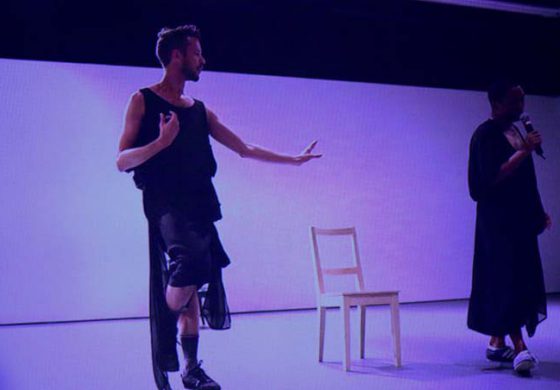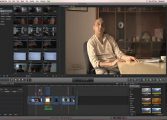Digital Landscapes and Cyber Flanerie
Kopal Chandra, a second year student, looked at ‘internet surfing’ as an act of flanerie, where the surfer moves from one webpage to another, from one topic to another, almost as if moving through the distinct neighbourhoods of a city. The figure of the classical flâneur, leisurely strolling through the streets and arcades of 19th century Paris, cultivating what the Hungarian film critic and writer Bela Balzac called ‘the gastronomy of the eye,’ has been emblematic of modernity. While not deliberately concealing his identity, the flâneur preferred to stroll incognito, mastering the art of ‘seeing without being caught looking,’ a play of the gaze more casual and swift than the intensity of voyeurism.[v]
The surfer has a semblance of some purpose to their uncharted journey, but usually no particular route in mind, and is ever willing to get detracted by yet another temptation. Kopal, who likes to do travel-writing, created a blog where she put up some of her short prose and poetry, hyperlinking selected words to other pieces on her own blog; after a few layers were navigated within this ‘controlled space’, the hyperlinks led to external content that she had no definitive control over, allowing the surfer to swim in the abyss of the world wide web. Although hyperlinking is a very basic technique of constructing a semi-controlled virtual space, it opened up an entire new way for Kopal to think about the idea of navigating such spaces, as well as the idea of the cyber journey itself. For example, one particular blog entry titled Thoughts on ‘Waking Life’ , which was a brief poetic response to Richard Linklater’s 2001 animation film Waking Life, included a hyperlink to an online video of the film that could be live streamed from a website which provided resources for ‘learning English’. The video included a brief description of the film in a pop-up box that directed the surfer to click on any word in the description to find out more about the word. Ironically, when I last checked this website in June 2016 – a couple of days after Britain had voted to exit the European Union – the word links revealed nothing more than error messages, almost as if the English language was in as great a crisis as England was.
Another more densely hyperlinked piece, a poem titled a moment at the beach heightened the experience of flânerie, by leading the surfer to weave in and out of the poem, or stray far away from it and completely succumb to the wilderness of the world wide web. Readers are invited to explore the blog on their own, but highlighting a few examples may be in order. The words ‘blue feather’ in the poem lead to an article in the Smithsonian magazine titled ‘Why Are Some Feathers Blue’ a scientific research on the blue pigment in certain birds. Another phrase, ‘slightly warm,’ leads to a visual gallery of images of melting ice from the website of nature photographer Nick Cobbing, whose images of ice and snow inspired BBC’s research and filming in Greenland for their series ‘Frozen Planet’. Similarly, ‘my core’ leads one to a story on the use of psychoanalytical concepts in Pixar’s 2015 animation film Inside Out and ‘smile’ surprises us with an article on medieval selfies on the blog of Dr. Erik Kwakkel, historian of medieval manuscripts at Leiden University.
While I have only listed here some of the more deliberate choices that the surfer is led to navigate, needless to say, the first step out of a controlled blog environment into another parallel space opens up metaphorically infinite number of pathways for navigation, each of which constructs a unique ‘narrative’ trajectory about the initial object of curiosity. Video theorist and filmmaker Andreas Treske suggests that online digital videos should be considered as temporal objects linked to other temporal objects in a neighbourly fashion, creating their own environment with an atmosphere marked by hotness or coolness.[vi] This analogy can be extended to digital text that constructs its own environment through hyperlinking too. This non-linear assemblage sets up a new ecosystem of information, where one deduction does not necessarily lead to the next along the beaten path.
In 1903, the German sociologist Georg Simmel argued, in an influential essay called “The Metropolis and Mental Life,” that in the tech-saturated city “stimulations, interests, and the taking up of time and attention” turn life into “a stream that scarcely requires any individual efforts for its ongoing.” Thus, the senses are almost lulled to auto-play by constant movement. Benjamin evokes the figure of the ghost or phantom, alluding to the weightlessnesness of modern existence, where the flâneur nonetheless leaves an imprint on everything he encounters. The digital ecology re-invokes these early 20th century debates by asking us to consider afresh questions of knowledge construction under conditions of excess, random association, chance encounters, and modularity. Moreover, surfing invokes watery landscapes and the rhythms of undulating waves, inviting us to dwell upon the metaphors of crashing, sailing, sinking etc. as modes of engagement. Thus, if the flâneur of the 20th C metropolis mapped space (and substance) horizontally, in strides and kilometers, the flâneur of cyberspace must map both depth and distance in order to construct their sense of being.



